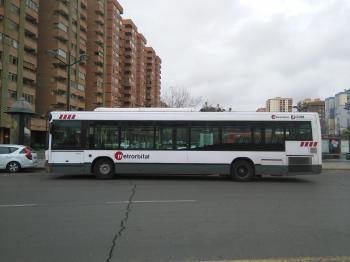Getting Around Valencia
Getting Around Valencia
All City Transport Options: What Locals Use and What’s Best for Tourists
General Overview
My first time using Valencia's metro was a bit of a rollercoaster. I jumped on at Colón station, thinking I’d glide my way over to the beach. Little did I know that navigating the lines takes some practice! Unlike most cities, each metro line has its quirks, and they run fairly efficiently—usually.Overall, getting around Valencia is relatively uncomplicated. You’ve got the metro, trams, and buses, all of which are connected and operated by Empresa Municipal de Transporte (EMT). The metro runs generally from about 5:30 AM until midnight, which is perfect if you're an early riser or a night owl, while trams and buses follow similar hours but can vary slightly. Tickets are priced reasonably, with a single journey setting you back about €1.50 (really a bargain compared to places like Madrid).
Oh, before I forget, a common mistake tourists make is thinking that the metro will get them everywhere—they’ll soon find out that buses might be more convenient for certain areas, especially if you want to reach, say, Malvarrosa beach without switching lines multiple times.
A local hack? Grab a “Bonometro” card if you plan on making several trips; it’s a multi-ride pass that saves you a bit of money in the long run. I learned this the hard way after splurging on single tickets whenever I went out!
Now, here's where it gets real. I faced a bit of frustration on a Sunday afternoon when I encountered a longer-than-expected wait for the tram. You could practically feel the vacation vibe in the air, so the rush was palpable. Locals may remember to plan ahead then!
On the bright side, one pleasant surprise came during a rainy day—a few trams had protective coverings, so I could dart from one stop to another without completely getting drenched. It’s these little things that keep you pleasantly engaged with the transport system!
In terms of safety, be mindful of your belongings, especially during peak hours when the metro can get packed to the brim. And if you're visiting during the fall, be extra cautious with slippery tracks after downpours.
If you’re heading to the City of Arts and Sciences, tram line 4 takes you straight there. Just remember, whether you’re hopping on the metro, trams, or buses in Valencia, there’s always a bit of a learning curve!
So my practical tip for you would be: download the official transport app before you arrive to check real-time schedules and plan your route. You’ll be grateful when you find yourself darting through the city without the usual hiccups. Happy travels!
Types of Transport

popular with tourists
The bus network in Valencia is extensive, covering key areas including the city center, beaches, and the famous City of Arts and Sciences. A single ticket costs about €1.50 and can be purchased on board or at kiosks, while a bonobus (10-trip ticket) is available for around €8.50, making it a cost-effective option for tourists. To save time, download the official EMT Valencia app, which provides real-time bus schedules, route planning, and live updates. It's advisable to keep your belongings secure, especially in crowded buses, and always validate your ticket before boarding to avoid fines. Additionally, familiarizing yourself with bus line numbers that connect you to popular attractions will enhance your traveling experience significantly.

Walking in Valencia is an excellent way to explore the city’s vibrant neighborhoods, historic sites, and beautiful parks. The central area, including the Ciutat Vella (Old Town), is particularly pedestrian-friendly, allowing you to soak in sights like the Valencia Cathedral, La Lonja de la Seda, and the picturesque Turia Gardens. A key tip for tourists is to wear comfortable shoes, as many streets are cobbled and may require more effort to traverse; this will enhance your experience as you navigate the charming alleys and plazas.
Additionally, consider downloading offline maps or using a walking guide app to help you find shorter routes between attractions, as the city can have unexpected twists and turns. Safety is generally good, but always stay aware of your surroundings, especially in crowded tourist areas, to keep your belongings secure. Happy walking in Valencia!
Additionally, consider downloading offline maps or using a walking guide app to help you find shorter routes between attractions, as the city can have unexpected twists and turns. Safety is generally good, but always stay aware of your surroundings, especially in crowded tourist areas, to keep your belongings secure. Happy walking in Valencia!
The auto in Valencia is a convenient way to explore the city and its surrounding areas, offering easy access to attractions like the City of Arts and Sciences and the beautiful beaches of Malvarrosa. Renting a car typically costs between €30 and €60 per day, depending on the season and the model, with rental companies accepting credit cards, and it's advisable to book your vehicle in advance online for better rates. Parking in the city can be challenging, so look for public parking garages, which usually charge around €1.50 to €2.50 per hour, or consider using street parking, where fees apply from 9 AM to 8 PM (except holidays). To save time, plan your routes using the ring roads (V-30 and V-21) when heading in or out of the city, and keep in mind that driving in the city center can get congested, especially during rush hour. Always observe local traffic signs and avoid driving in bus lanes; violations can result in hefty fines.
Here you can learn about all types of transport in Valencia. What transport is available, how to reach tourist attractions and which mode of transport is optimal.

